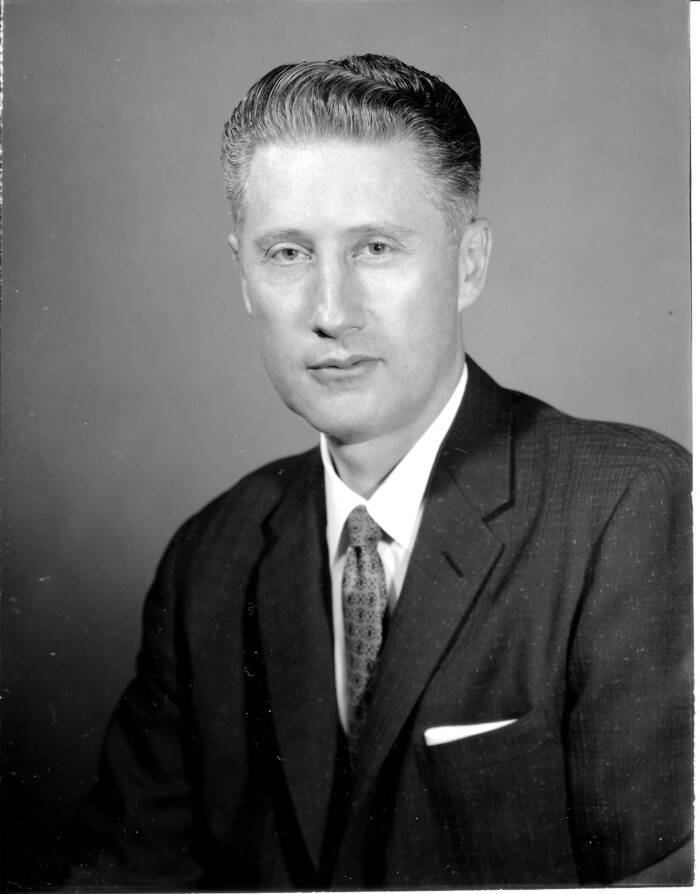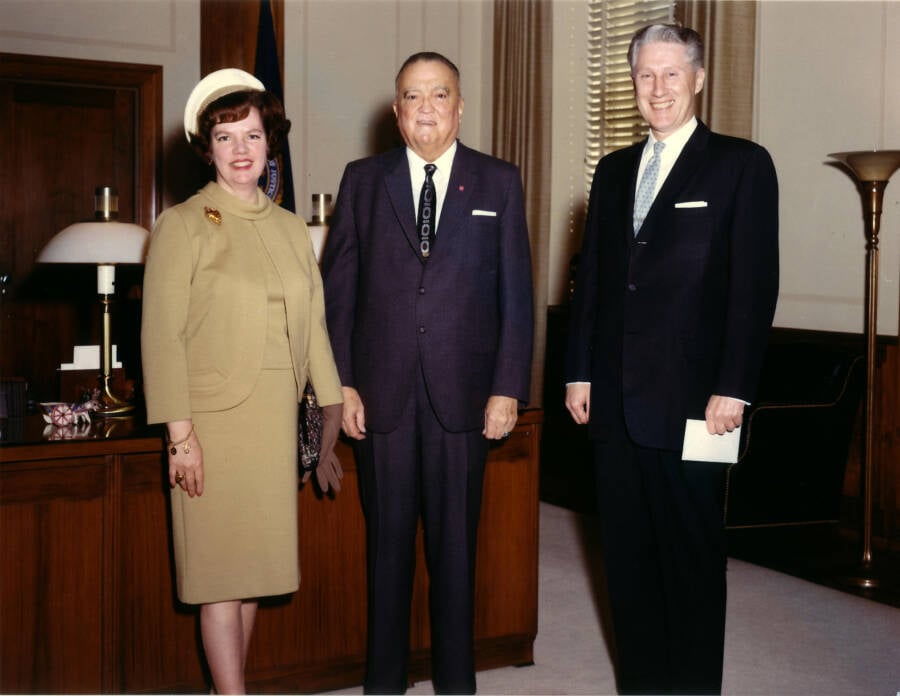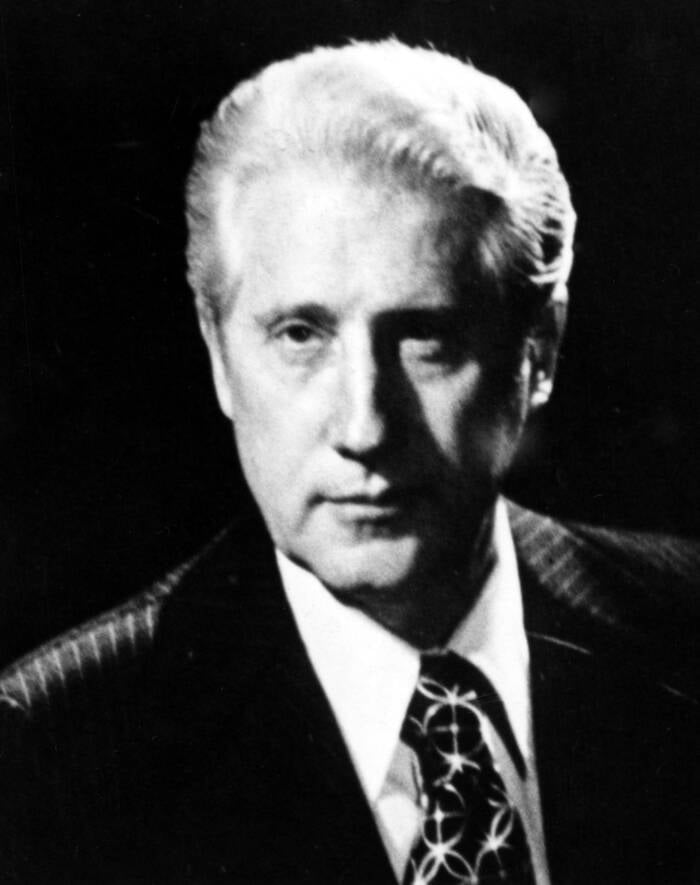While working as the No. 2 official at the FBI, Mark Felt secretly cooperated with Washington Post reporters Bob Woodward and Carl Bernstein as they investigated Watergate.

MediaPunch Inc/Alamy Stock PhotoAn undated photo of Mark Felt from during his tenure at the FBI.
In the aftermath of the shock and outrage of the Watergate scandal, there was also a mystery. Who was “Deep Throat,” the secret source who leaked information to Washington Post reporters Bob Woodward and Carl Bernstein? When Deep Throat revealed himself to be Mark Felt, a former FBI official, this question was replaced by another: Who was Mark Felt?
The second-highest-ranking official at the FBI during the Watergate scandal, Felt had potential personal and political reasons to leak information. He had been passed over for the top job at the FBI after the death of J. Edgar Hoover, and Felt had a firsthand look at President Richard Nixon’s abuse of power, as he had tried to obstruct the FBI’s investigation into Watergate.
But Felt kept his identity as “Deep Throat” secret for decades, flat-out denying on several occasions that he’d ever leaked information. Mark Felt didn’t reveal his role in Watergate until the final chapter of his life, when he admitted to Vanity Fair in 2005: “I’m the guy they used to call Deep Throat.”
Mark Felt’s Rising Star At The FBI
Born on August 17, 1913, William Mark Felt grew up in Twin Falls, Idaho. After graduating from Twin Falls Senior High School and then the University of Idaho, Felt moved to Washington, D.C. to work for U.S. Senator James Pope.
Eventually, Felt began attending George Washington University Law School at night and earned a law degree in 1940. He briefly worked for the Federal Trade Commission, but decided to apply to the Federal Bureau of Investigation by the end of 1941. As it turned out, just days after Felt applied, the U.S. was attacked at Pearl Harbor and joined World War II.

Federal Bureau of InvestigationThe FBI Academy building in the 1940s.
After officially joining the FBI in January 1942, Felt worked in a couple of different FBI offices before returning to Washington, D.C. to join the Espionage Section of the Domestic Intelligence Division. In this capacity, Mark Felt spent much of World War II tracking down Axis spies.
It wasn’t the only thing he did. Felt also caught the eye of J. Edgar Hoover, who was then the head of the FBI. After overseeing the Salt Lake City and Kansas City FBI bureaus, Felt returned to Washington, D.C. in 1962 to oversee training at the FBI Academy. He then became head of the FBI’s inspection division in 1964, and the Deputy Associate Director in July 1971.
This put Mark Felt third in command behind Hoover and Clyde A. Tolson. Both Hoover and Tolson, however, were getting older and in poor health, and much of the FBI’s day-to-day operations consequently fell to Felt.

dpa picture alliance/Alamy Stock PhotoMark Felt and his wife with J. Edgar Hoover in 1967.
But when Hoover died in May 1972 — and Tolson retired — Mark Felt was not tapped to run the FBI. Instead, President Richard Nixon put a loyal Justice Department official named L. Patrick Gray III in charge.
Not long after that, Mark Felt would begin leaking details about the Watergate scandal to reporters at The Washington Post.
How Mark Felt Became “Deep Throat”

National Archives and Records AdministrationA botched burglary of the Democratic National Committee’s headquarters at the Watergate complex in Washington, D.C. launched the Watergate scandal — and transformed Mark Felt into “Deep Throat.”
The Watergate scandal began on June 17, 1972, when a security guard at the Watergate complex in Washington, D.C. discovered a break-in. The guard, Frank Wills, alerted the police, who found five men in the Democratic National Committee’s headquarters. The intruders had bugging equipment, $2,300 in cash — and White House phone numbers.
Notably, one burglar was James McCord, the security director of the Committee to Re-Elect the President (infamously known as CREEP). McCord and the other burglars also had ties to a group of White House aides known as the “Plumbers,” whose job was to prevent leaks. And Bob Woodward, a young Washington Post reporter who was sent to cover the burglars’ arraignment, sensed that this was no ordinary burglary.
As Woodward began to poke around, he decided to reach out to a high-ranking government source who he happened to have met before: Mark Felt. They had crossed paths in early 1970, at the White House, when Woodward was a Navy lieutenant delivering classified messages to the National Security Council. According to Felt’s obituary in The New York Times, the two men struck up a conversation, and Felt gave Woodward his number.
When Woodward reached out just days after the Watergate break-in, Felt agreed to talk to him. He confirmed that White House official E. Howard Hunt had been involved in the burglary, which gave Woodward the ammunition he needed to keep chasing the story. Woodward started referring to his source as “my friend” (M.F.), but then-managing editor Howard Simons dubbed Felt “Deep Throat” after a 1972 pornographic movie.
Though Carl Bernstein, Woodward’s reporting partner, has noted that Felt largely confirmed information that he and Woodward already had, Felt nevertheless became an important source. He continued to meet with Woodward despite great personal risk, and he and Woodward worked hard to keep his identity a secret. For example, if Woodward wanted to speak to Felt, he would move a flower pot with a red flag on his balcony.
That said, it’s worth noting that Woodward and Bernstein had many sources; Felt was far from the only person they worked with.

Adam Scull/Alamy Stock PhotoBob Woodward and Carl Bernstein, the reporters who famously investigated the Watergate scandal, in an undated photo.
Eventually, the White House discovered that Felt had leaked some information. In a recorded White House conversation from Oct. 19, 1972, Nixon’s chief of staff H.R. Haldeman informs Nixon of Felt’s actions, to which the president responded, “Now why the hell would he do that?”
Still, Felt’s role in the Watergate scandal remained largely a secret. Aware that Nixon wanted to move past the Watergate scandal — to the extent that Nixon had ordered the CIA to tell the FBI to back off — Felt continued to provide key information to Woodward and Bernstein.
Ultimately, the scandal consumed the president. As impeachment seemed imminent, Richard Nixon resigned from office in disgrace on August 9, 1974.
And Mark Felt quietly continued on.
A Scandal Of His Own, Retirement, And A Stunning End-Of-Life Reveal
Though Mark Felt left the FBI by June 1973, he was soon caught up in an infamous scandal of his own. He was found guilty of conspiring to violate the constitutional rights of Americans in 1980, after ordering illegal break-ins at the homes of people who were associated with the Weather Underground, a radical and militant left-wing group.
Surprisingly, Richard Nixon testified on Felt’s behalf — and President Ronald Reagan pardoned Felt not long after his conviction.

Everett Collection Inc/Alamy Stock PhotoMark Felt in the late 1970s.
Around the same time, Felt wrote his memoir, The FBI Pyramid: From the Inside, in which he emphatically denied that he had played any role in the Watergate scandal. “I never leaked information,” Felt claimed, “to Woodward and Bernstein or to anyone else!”
Meanwhile, the public debate over Deep Throat’s identity continued. Figures like Henry Kissinger, Deputy White House counsel Fred Fielding, and Chief Justice William Rehnquist were all floated as possible candidates. So was Felt, though he emphatically denied his involvement in Watergate.
“It would be contrary to my responsibility as a loyal employee of the FBI to leak information,” Felt insisted in 1999.
Six years later, however, Mark Felt admitted to the truth. In 2005, Felt — then 91 years old and encouraged by his family to get closure before he died — cooperated with a Vanity Fair piece, saying: “I’m the guy they used to call Deep Throat.” He had been reluctant to reveal his identity, but had reportedly done so because he thought it could financially help his family once he died.
Woodward and Bernstein confirmed that Felt was telling the truth — and the decades-long mystery of Deep Throat was thus solved.
Felt died on Dec. 18, 2008, at the age of 95, but his family did benefit from the revelation that he was Deep Throat. Felt co-authored the books A G-Man’s Life: The FBI, Being ‘Deep Throat,’ And the Struggle for Honor in Washington and Mark Felt: The Man Who Brought Down the White House, which was later made into a 2017 movie starring Liam Neeson.

Album/Alamy Stock PhotoLiam Neeson as Mark Felt in the 2017 movie Mark Felt: The Man Who Brought Down the White House.
Ultimately, however, Mark Felt remained almost as enigmatic as Deep Throat. He belonged to a world of high political stakes and sensitive investigations, and was seemingly most comfortable operating in the shadows. Even today, his precise motivations for working with Woodward and Bernstein during the Watergate scandal — and any inner battles he may have fought about leaking information to reporters — remain known only to him.
After reading about Mark Felt, better known as the Watergate source “Deep Throat,” see how Nixon “Plumber” G. Gordon Liddy became one of the president’s most loyal henchmen. Or, learn how Martha Mitchell, the wife of Attorney General John Mitchell, tried to tell the world about Watergate.





